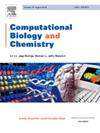SSE-Net: A novel network based on sequence spatial equation for Camellia sinensis lysine acetylation identification
IF 2.6
4区 生物学
Q2 BIOLOGY
引用次数: 0
Abstract
Lysine acetylation (Kace) is one of the most important post-translational modifications. It is key to identify Kace sites for understanding regulation mechanisms in Camellia sinensis. In this study, we defined a mathematical formula, named sequence spatial equation (SSE), which could give each amino acid coordinate in 3-D space by rotating and translating. Based on SSE, an optional network SSE-Net was constructed for representing spatial structure information. Centrality metrics of SSE-Net were used to design structure feature vectors for reflecting the importance of sites. The optimal features were fed into classifier to construct model SSE-ET. The results showed that SSE-ET outperformed the other classifiers. Meanwhile, all MCC results were higher than 0.7 for different machine learning, which indicated that SSE-Net was effective for representing Kace sites in Camellia sinensis. Moreover, we implemented the other models on our dataset. The results of comparison showed that SSE-ET was much more powerful than the others. Specifically, the result of SN was nearly 20 % higher than the other models. These results showed that the proposed SSE was a valuable mathematics concept for reflecting 3-D space Kace site information in Camellia sinensis, and SSE-Net may be an essential complementary for biology and bioinformatics research.
赖氨酸乙酰化(Kace)是最重要的翻译后修饰之一。确定赖氨酸乙酰化位点是了解山茶花调控机制的关键。在这项研究中,我们定义了一个数学公式,命名为序列空间方程(SSE),它可以通过旋转和平移给出每个氨基酸在三维空间中的坐标。基于 SSE,我们构建了一个可选的网络 SSE-Net,用于表示空间结构信息。利用 SSE-Net 的中心度量来设计结构特征向量,以反映位点的重要性。将最优特征输入分类器,构建 SSE-ET 模型。结果表明,SSE-ET 的表现优于其他分类器。同时,不同机器学习的 MCC 结果均高于 0.7,这表明 SSE-Net 能有效地表示山茶花中的 Kace 点。此外,我们还在数据集上实现了其他模型。比较结果表明,SSE-ET 比其他模型更强大。具体来说,SN 的结果比其他模型高出近 20%。这些结果表明,所提出的 SSE 是反映山茶花三维空间 Kace 位点信息的一个有价值的数学概念,SSE-Net 可能是生物学和生物信息学研究的一个重要补充。
本文章由计算机程序翻译,如有差异,请以英文原文为准。
求助全文
约1分钟内获得全文
求助全文
来源期刊

Computational Biology and Chemistry
生物-计算机:跨学科应用
CiteScore
6.10
自引率
3.20%
发文量
142
审稿时长
24 days
期刊介绍:
Computational Biology and Chemistry publishes original research papers and review articles in all areas of computational life sciences. High quality research contributions with a major computational component in the areas of nucleic acid and protein sequence research, molecular evolution, molecular genetics (functional genomics and proteomics), theory and practice of either biology-specific or chemical-biology-specific modeling, and structural biology of nucleic acids and proteins are particularly welcome. Exceptionally high quality research work in bioinformatics, systems biology, ecology, computational pharmacology, metabolism, biomedical engineering, epidemiology, and statistical genetics will also be considered.
Given their inherent uncertainty, protein modeling and molecular docking studies should be thoroughly validated. In the absence of experimental results for validation, the use of molecular dynamics simulations along with detailed free energy calculations, for example, should be used as complementary techniques to support the major conclusions. Submissions of premature modeling exercises without additional biological insights will not be considered.
Review articles will generally be commissioned by the editors and should not be submitted to the journal without explicit invitation. However prospective authors are welcome to send a brief (one to three pages) synopsis, which will be evaluated by the editors.
 求助内容:
求助内容: 应助结果提醒方式:
应助结果提醒方式:


